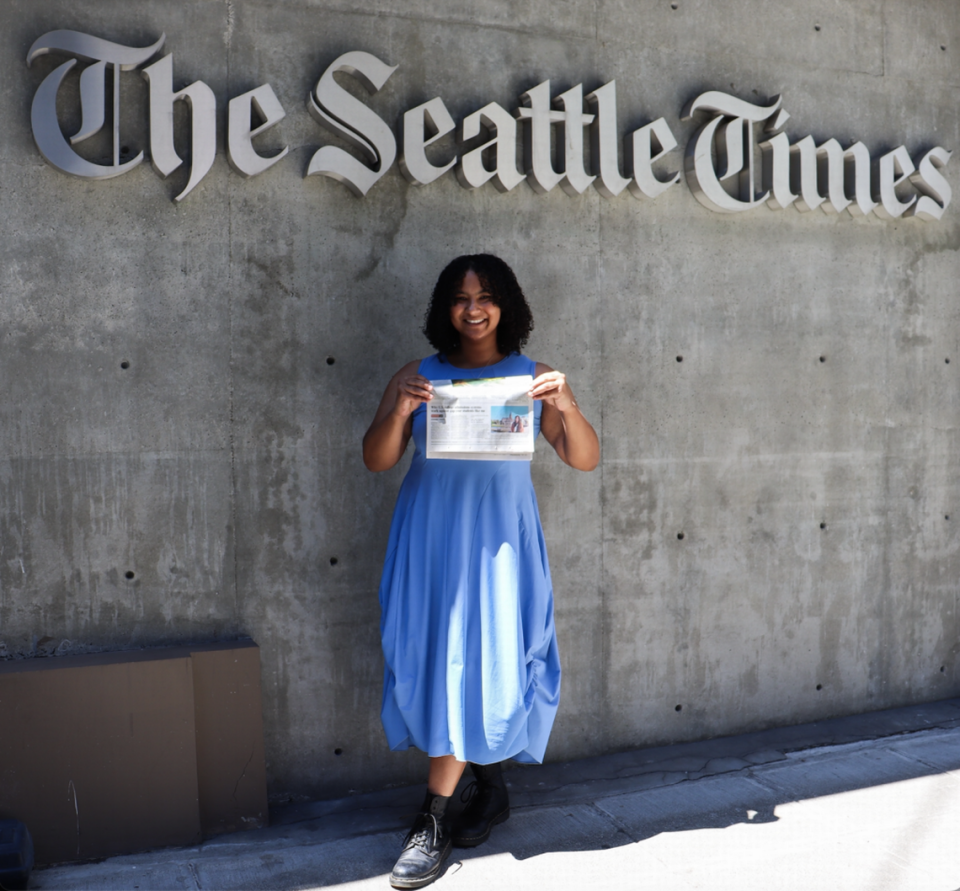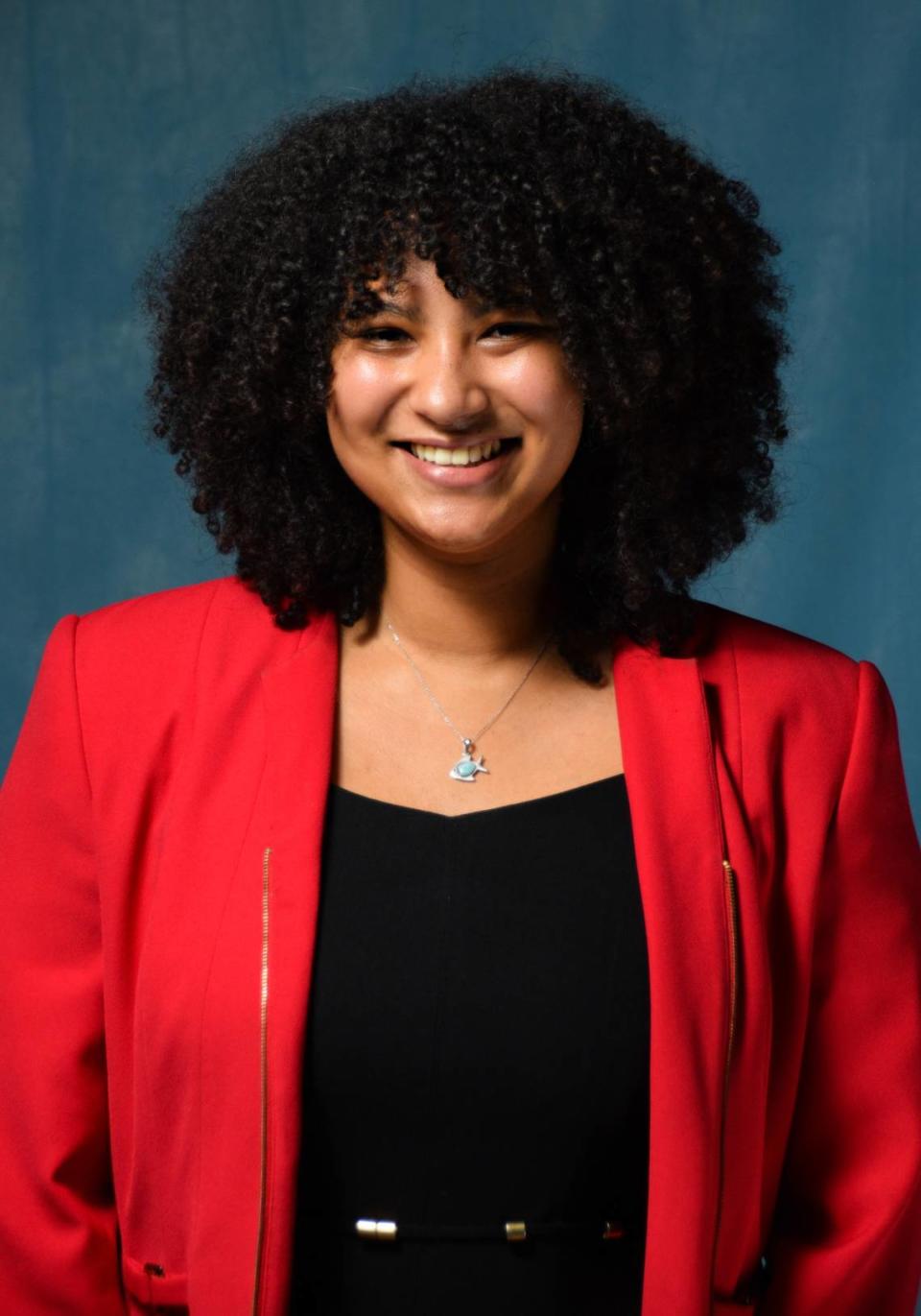Student Voices: Why U.S. college admissions systems hurt gap-year students like me
(Editor’s note: This story was originally published by The Seattle Times through the Education Lab Student Voices project. Paige Censale is a graduate of Squalicum High School in Bellingham and was a contributor to the 2023 Student Voices cohort.)
With competitive admissions, but more pressingly, a price tag of an average $36,000 a year, college is a financial risk you must think wisely about. Without family financial backing or guarantee of a high-paying job, you risk financial ruin after graduation, caused by student debt that has left 54% of Americans feeling defeated and depressed.
At 17, I felt conflicted about jumping right into college and justifying the loans without knowing what I wanted to study. So I planned a gap year. But instead of being rewarded for being responsible and not wasting money pursuing a degree I might never use, I was chastised by friends and family members who told me, “You’re throwing your future away.”
Worse yet, college admissions systems basically penalized me for starting later, before I was ready to make the transition. I’ve learned there are steep consequences to deviating from the high-school-to-college-pipeline that no one talks about.
Gap years prepared me for the future, but not for the headache of college admissions
Taking time off encouraged work and life experiences that helped me compete for the scholarships I needed to attend university. But applying for admission and aid became a stressful ordeal down the road.
Despite disapprovals, I took a gap year — actually, three of them. I left for the southern border to document stories of immigration and later interned for a European search-and-rescue vessel. I became conversational in Spanish and German, lived abroad for a year and became running partners with an 82-year-old German man who is still my friend. I even took a few community college classes in subjects I thought were fun.
These gap years helped me grow as a person in ways that attending college straight out of high school would have never done. At 21, I understand why college is important for my future. But for students like me seeking to obtain a degree after time away, the roadblocks can be incredibly discouraging.

Community college credits can count against you
When I began applying to colleges, I found myself classified as a transfer student instead of a freshman, even though I only took nine community college credits in total. The University of California, Berkeley, said: “Because you took college classes beyond the summer after high school graduation you technically are a ‘transfer student.’ ” The University of Washington, Western Washington, Stanford and other universities said the same.
Being labeled a transfer made me ineligible to apply for full-ride freshmen scholarships and meant I would be offered less financial aid than my applicant peers. This classification makes it more difficult for low-income students, like me, to pursue higher education.
After many mind-numbing email exchanges I learned removing those community college courses from my record was not an option. Colleges demanded these credits to evaluate my most recent academic history. Failure to disclose them would result in my application being discarded.
Ángel García Donjuán, a University of North Texas transfer student I met while living in Germany, had similar problems and has spent the past year advocating for awareness of these issues.
“The weight of my application was placed on my community college GPA and admissions didn’t always ask for essays to explain my valuable gap-year experiences,” García Donjuán said. “I wish institutions looked at transfer students more holistically like they do with freshmen applicants and offered a wider range of financial aid and scholarship opportunities. Not enough responsibility is placed on the institutions’ end to accommodate diverse educational backgrounds.”
For students on a nontraditional path to degrees, this deceptive classification feels punitive.
The gray areas of scholarship criteria, recommendations, and transcripts
I pulled my hair out trying to find at least one university that didn’t care about my community college credits and would let me apply for full financial aid. My stomach knotted upon realizing that eight of the 10 schools that allowed this were Ivy League schools.
While these institutions offer flexible gap year eligibility for financial aid and scholarships, first you must be accepted to these incredibly competitive colleges. I held my breath and still applied, keeping close a backup plan: I would finish my associate degree at community college on financial aid and seek scholarships to transfer to a four-year in-state institution. But, as I learned, even finding external scholarships as a gap-year student is problematic.
I thought more renowned scholarships offered by sources like Coca-Cola, or local, smaller scholarship funds could help subsidize tuition costs that the federal student aid program did not cover.

As I read into many external scholarship guidelines, I kept encountering the phrase “must be either a high school senior or currently enrolled in college.” But I was neither. The gap years put me into a financial aid gray area. Barriers like this ultimately push gap-year applicants like me toward committing to debt first and seeking scholarships later.
Most gap-year students also don’t have access to guidance counselors or staff to help you navigate this complicated system. Despite being several years out of high school, gap-year students are forced to return to our former stomping grounds for required application materials, such as teacher recommendations, transcripts, and waivers for hefty application fees.
Staying in touch with my former guidance counselors, algebra and marketing teachers, luckily, made this process pleasant. If I hadn’t had good relationships with staff, I might have been forced to submit dull and outdated recommendations, or struggled to get them at all.
Gap years saved my future
In my applications, I explained how my gap-year adventures ignited my passion for studying film and international relations. I applied to four universities and this March was accepted by three, offered a substantial financial aid package by one, but my last acceptance letter awarded me a full ride. I will begin studying at Brown University this fall.
Between my gap years, and the community college credits, my full-ride freshmen admission is a rare privilege. I am incredibly grateful for this opportunity and for a school like Brown to have flexible financial aid opportunities for nontraditional students. However, as times change, outdated college admissions rules must change, too.
Gap years will not disappear, in fact, in our post-COVID world, they are rising. But these classifications and financial aid barriers discourage nontraditional students. In an oversaturated job market, gap years can give students an edge in attaining valuable work experience, help college applicants stand out from the crowd, and encourage maturity.
Because of my gap years, I am entering college at nearly 22, but much more confident and prepared than I ever was at 17. Why wouldn’t the U.S. education system want more students to feel like this?
Read the extended version of this article on Paige Censale’s blog, paigecensale.com.
(Paige Censale, 21, was born in El Paso, Texas, and grew up in Bellingham, where she attended Squalicum High School. After graduation in 2019, she returned to El Paso, capturing stories of asylum-seekers on the southern border and later in Europe on the U.S.-German fellowship Congress-Bundestag Youth Exchange for Young Professionals. She is the current digital and communications coordinator for the immigration nonprofit, Haitian Bridge Alliance, and will be starting her freshman year at Brown University this fall.)

